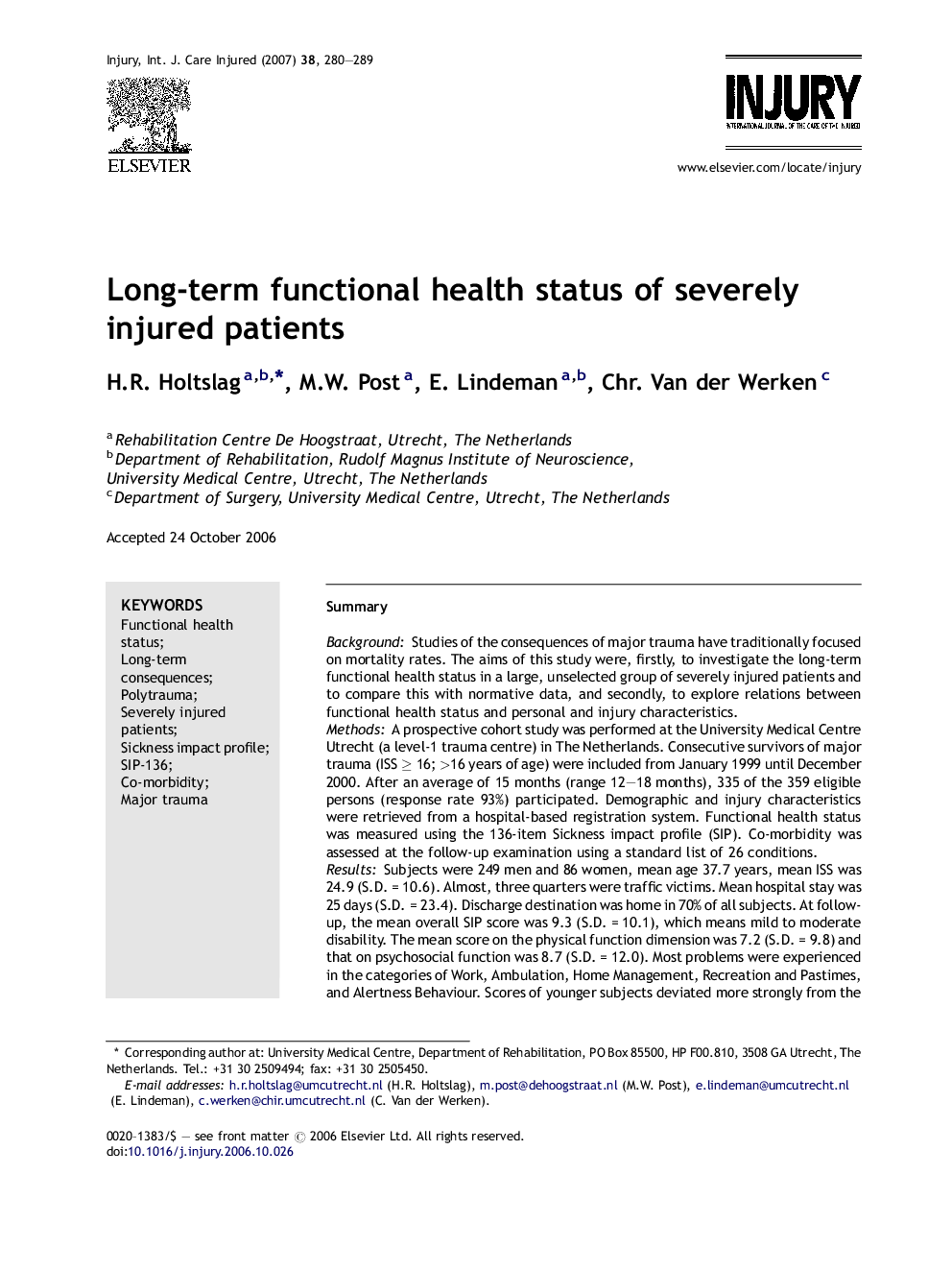| Article ID | Journal | Published Year | Pages | File Type |
|---|---|---|---|---|
| 3242396 | Injury | 2007 | 10 Pages |
SummaryBackgroundStudies of the consequences of major trauma have traditionally focused on mortality rates. The aims of this study were, firstly, to investigate the long-term functional health status in a large, unselected group of severely injured patients and to compare this with normative data, and secondly, to explore relations between functional health status and personal and injury characteristics.MethodsA prospective cohort study was performed at the University Medical Centre Utrecht (a level-1 trauma centre) in The Netherlands. Consecutive survivors of major trauma (ISS ≥ 16; >16 years of age) were included from January 1999 until December 2000. After an average of 15 months (range 12–18 months), 335 of the 359 eligible persons (response rate 93%) participated. Demographic and injury characteristics were retrieved from a hospital-based registration system. Functional health status was measured using the 136-item Sickness impact profile (SIP). Co-morbidity was assessed at the follow-up examination using a standard list of 26 conditions.ResultsSubjects were 249 men and 86 women, mean age 37.7 years, mean ISS was 24.9 (S.D. = 10.6). Almost, three quarters were traffic victims. Mean hospital stay was 25 days (S.D. = 23.4). Discharge destination was home in 70% of all subjects. At follow-up, the mean overall SIP score was 9.3 (S.D. = 10.1), which means mild to moderate disability. The mean score on the physical function dimension was 7.2 (S.D. = 9.8) and that on psychosocial function was 8.7 (S.D. = 12.0). Most problems were experienced in the categories of Work, Ambulation, Home Management, Recreation and Pastimes, and Alertness Behaviour. Scores of younger subjects deviated more strongly from the norm scores than those of elderly patients. Type of injury, especially lesions of traumatic brain and spinal cord and extremity injuries, was a predictor of both psychosocial and physical functioning after more than 1 year. The most important predictors, however, were age and co-morbidity.
